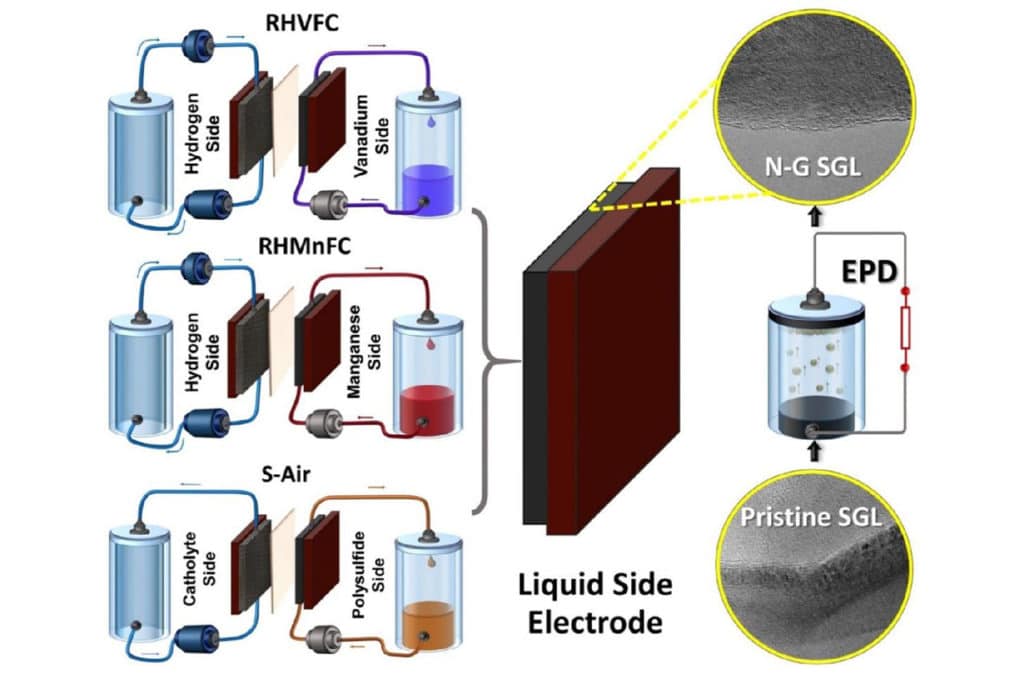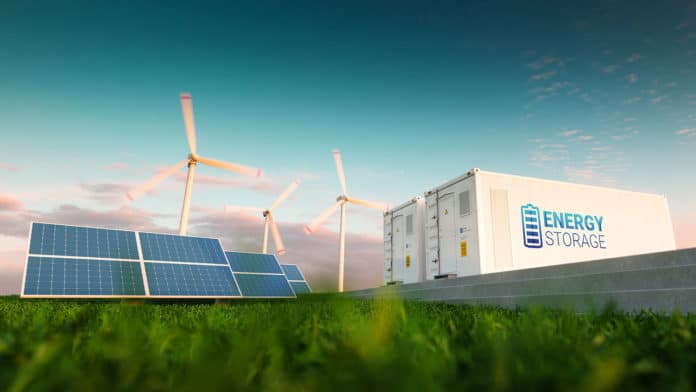Wind and solar power generation are expanding around the globe at record rates, allowing more people to get their electricity from clean, renewable sources than ever before. But intermittency issues keep them from connecting widely to the National grid. One possible solution to the intermittency problems of wind and solar energy involves the introduction of long-term battery technology, such as a redox flow battery. Despite the great promise, the current cost of the system is a key determinant of real-life deployment.
Researchers from WMG at the University of Warwick, in collaboration with Imperial College London, have found a way to improve hybrid flow batteries or regenerative fuel cell (RFC) technology. The new approach can safely store electricity for a very long time for about a fifth of the cost of existing technologies, with flexible placement and low environmental impact.

The researchers enhanced three hybrid flow cells using nitrogen-doped graphene (exposed to nitrogen plasma) in a binder-free electrophoresis technique (EPD). The technology combines carbon-based electrodes with economical electrolytes (manganese or sulfur) by simple and yet highly efficient electrophoretic deposition of nanocarbon additives (nitrogen-doped graphene), which significantly improves electrode durability and performance in highly acidic or alkaline environments.
“This EPD technique is not only simple but also improves the efficiencies of three different economical hybrid flow batteries, thereby increasing their potential for widespread commercial adoption for grid-scale energy storage,” said Dr. Barun Chakrabarti, a Research Fellow in WMG at the University of Warwick.
They claim that the total storage cost of a current hybrid battery is about 1/30 of the cost of competing batteries, such as lithium-ion systems. Extended technologies can be used to store wind or solar energy from several days to entire seasons, for about £15 to £20 per kilowatt-hour. These batteries are also very useful in grid-scale load balancing applications because of their highly flexible design, as they have the unique ability to dimension their power regardless of their energy.
The energy density of a hybrid flow battery, especially a polysulfide/air system (S-Air), is 500 times higher than that of pumped hydroelectric storage. It is also much more compact and can be placed close to any renewable energy.
